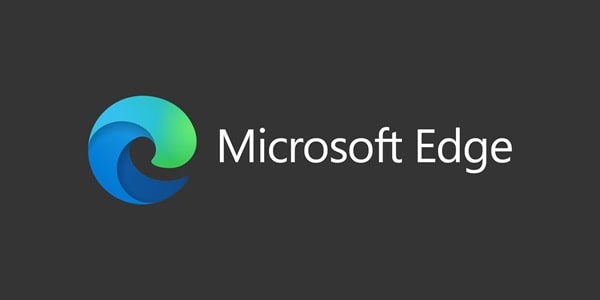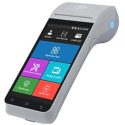Navigating Microsoft Edge Online Testing: Advantages and Challenges
Are you planning to expand your testing infrastructure to Microsoft Edge online? This article will massively help you implement your decision in this regard. Microsoft Edge, now built on the Chromium engine, is an integral part of the modern competitive browser industry in development and testing.
Most of the recent updates have massively improved the performance, security, and cross-platform support of Microsoft Edge, making it a significant player in end-user market share. As a tester, understanding the nuances of online testing Microsoft Edge will help you deliver high-quality web apps.
This article will explore some of the advantages and challenges of using Microsoft Edge online. During our discussion, we will provide valuable insights into how testers can navigate this essential aspect of the modern app development industry.
Advantages of Microsoft Edge Online

While using Microsoft Edge online for running the test cases, testers will be able to utilize the following benefits:
1. Cross-Platform Compatibility
One of the most essential advantages of Microsoft Edge is its smooth cross-platform compatibility. This is because Edge is available on most popular operating systems like iOS, Windows, Mac OS, and Android.
Therefore, developers can easily access this web browser on all of these platforms to implement. Moreover, due to the cross-platform support, the testers can quickly identify and resolve issues arising from differences in OS behaviors or specific configurations.
2. Chromium Engine Benefits
The transition of Microsoft Edge into the Chromium engine helps it to share much of its underlying architecture with Google Chrome. This similarity in architecture further means the implementation of the following benefits:
- Microsoft Edge has Chromium’s performance and efficiency, providing a fast and reliable browsing experience irrespective of the platform on which it is being executed.
- The availability of a vast library of Chrome extensions also flows over for the edge users. This inclusion also helps enhance the functionality and customization options on Microsoft Edge.
- Due to a joint development and testing engine, web apps are likelier to behave similarly on Edge and Chrome. This behavior similarity also helps testers simplify the testing process on these engines.
3. Enhanced Security Features
Microsoft Edge is famous for its robust security features that protect user data. For instance, the browser protects against phishing malware, sandboxing, and hardware isolation. The testers can use these security features to ensure a secure development life cycle.
While testing apps on Microsoft Edge online, the tester should also ensure user security and privacy, which are critical components of the development and testing cycle.
4. Developer Tools
Microsoft Edge has a comprehensive suite of developer tools that help test and debug. To further improve our knowledge about these tools, we have mentioned some of the major ones below:
- The Elements panel allows the testers to inspect and modify the DOM and CSS elements on the application’s user interface.
- The testers can log diagnostic information using the Console panel and interact directly with the JavaScript elements.
- The Sources panel, on the other hand, helps the testers to debug the JavaScript code and resolve the bugs and errors that might be present in the application interface.
- Using the performance panel of Microsoft Edge online, the testers can measure the web application’s performance to ensure that it performs consistently on every device and software combination.
Using all the above tools, the testers can diagnose and resolve issues, which will, in turn, help make Edge a powerful browser in terms of development and testing.
5. Integration with Microsoft Ecosystem
A considerable segment of enterprises and individual developers are also deeply embedded in the Microsoft ecosystem. For these segments of users, Edge offers seamless integration with all Microsoft tools like Visual Studio, Azure DevOps, and Microsoft 365.
Testers can implement a streamlined workflow using this integration, from code development and version control to testing and deployment.
6. Progressive Web Apps Support
Progressive web applications are those web apps that can be accessed on various devices and function as if they are native apps. The main advantage of these applications is that they not only help save a lot of development time by eliminating individual development scenarios but also are seamless to test.
Since Microsoft Edge supports progressive web apps, the testers can seamlessly test these apps for offline capabilities, performance, and responsiveness, irrespective of their use cases.
Challenges of Microsoft Edge Online Testing
Now that we have understood the advantages of using Microsoft Edge online for application development and testing let us go through some of the significant challenges developers and testers will face during this process. We will also try to state some of the most common ways that can help resolve these issues:
1. Browser-Specific Bugs
Despite Microsoft Edge having the same Chromium engine, it may show browser-specific bugs and behaviors due to additional features and customizations that Microsoft has solely introduced. The testers must identify and address these issues by adequately testing and deploying unique solutions that might not be relevant to other Chromium-based browsers.
2. Compatibility Issues with Older Versions
While Microsoft continuously updates Edge, almost 75% of users never update their browser versions due to organizational policies or personal preferences, so, the testers must ensure compatibility with older versions to ensure optimal market reach.
3. Limited Market Share Compared to Other Browsers
Although Edge has started to gain a lot of popularity, its market share remains behind that of other giants like Google Chrome. Due to this lower market share, specific testers may prioritize other browsers over Microsoft Edge online. However, to ensure a genuinely comprehensive testing strategy, it should be noticed in the test plan.
4. Performance Variations
While implementing performance testing, the testers might encounter variations in how the web app behaves on Edge compared to other browsers. These variations can result from different resource management, rendering processes, or JavaScript execution stages. So, by understanding and optimizing these differences, the testers can provide the same end-user experience across all browser versions.
5. Complexity of Testing Environments
Setting up a testing environment that accurately replicates real-world use scenarios for Edge browsers can be complex, especially for new developers. During this process, the testers must consider several factors such as operating systems, network conditions, device types, and user settings.
The most effective solution to this problem is the integration of various cloud-based platforms like LambdaTest, an AI-powered test orchestration and execution platform that lets you run manual and automated tests at scale with over 3000+ real devices, browsers, and OS combinations.
This platform allows you to improve the efficiency of the testing process; parallel test execution, live test activity logging, and comprehensive test report generation are also incorporated.
Best Practices for Microsoft Edge Online Testing
Now that we’ve finished exploring all the challenges and advantages of Microsoft Edge online, let us go through some of the best practices that can help the developers and testers further to improve the efficiency of the overall testing infrastructure:
● Using Automated Testing Tools
To further improve the efficiency of Microsoft Edge online testing, the testers can use automated testing tools and frameworks like Cypress, Playwright, and Selenium. These tools can automate repetitive testing instances to reduce human error and provide overall comprehensive test coverage.
● Cross-Browser Testing
Cross-browser testing is the process of verifying the performance of an app on a combination of different browsers, operating systems, and devices. As mentioned earlier, LambdaTest provides a cloud-based environment for implementing automated cross-browser testing without including local setups.
● Regularly Update the Testing Environments
The testers must remember that the app development industry and individual applications constantly evolve to incorporate new features and testing parameters. So, the testing environment must be regularly updated for, including the latest versions of Microsoft Edge and all these parameters.
With the implementation of this approach, the testers can catch issues introduced by new browser updates and ensure that the app remains compatible with the latest features and standards of the market.
● Utilize Edge Developer Tools
It is important for testers to intelligently utilize Edge’s built-in developer tools to diagnose and debug the issues present on these browsers. For example, the performance panel can help testers identify massive bottlenecks and optimize web performance. On the other hand, the network panel will be massively helpful in understanding and improving the network request efficiency.
● Monitor User Analytics
The testers can use various analytics tools to monitor how users will interact with the web apps on the Microsoft Edge browser. By understanding the real-world usage patterns and the issues that can arise due to these patterns, the testers can provide valuable insights for implementing targeted testing and optimization efforts.
● Accessibility Testing
The testers must ensure the web app is accessible to all users, including those with difficulties. To implement this process, the testers must use accessibility guidelines and tools like Lighthouse and Axe. Accessibility testing is also essential for compliance and to provide an inclusive user experience all around the globe.
By following all the above best practices, app-developing companies can streamline the testing process and create a positive brand reputation, which will be vital in driving business growth.
The Bottom Line
Considering all the factors discussed in this article, we can conclude that Microsoft Edge online is an essential part of modern web development. While its unique share of challenges, the advantages of cross-platform compatibility, enhanced security, and powerful developer tools make it a critical component of a comprehensive testing strategy.
By using automation testing frameworks, cloud-based testing platforms, and specific tools, the testers can ensure that the web apps deliver a consistent, high-quality experience to all their users on Microsoft Edge online.
Finally, by following all the best practices and utilizing the right tools, the testers can navigate the complexities of Microsoft Edge online testing effectively while ensuring that the web apps are robust, secure, and high-quality.



